Bark, Buds, Berries, & Blooms: Winter Snapshots from Virginia
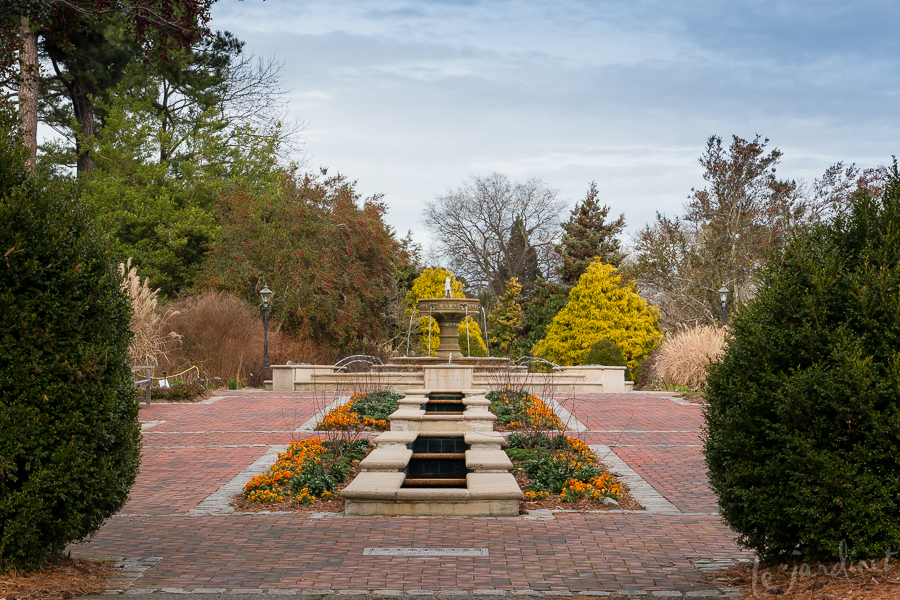
After a red-eye flight across the country and barely two hours of sleep, what would YOU do to recover? Yup – head out to a garden of course! And that's exactly what I did when I arrived in Norfolk, Virginia Beach last Sunday, albeit via Starbucks (caffeine was a pre-requisite after all).
I was in town to speak at two back to back events, both hosted at the Norfolk Botanical Garden, but of course I had packed my camera and was thrilled to discover that I had left snowy Seattle for a balmy, if cloudy 70'.
The beauty of winter gardens lies in the details. A mere cursory glance would suggest there's little of interest. Yet look more closely and you'll discover all manner of 'garden moments'. Not only that, we can glean design ideas from this delightful botanical garden and spice up our home landscapes no matter where we live.
Here are a few of my favorite winter snapshots and their design lessons.
When More is More.
Who can resist the cheerful face of a pansy or their smaller cousin the viola? I loved this display outside the visitors center where they were planted in large drifts, intermingled with black mondo grass. This single color was so much more effective than a mixed planting would have been.
Try this idea in a container or alongside the walkway to your front door.
If you prefer to get this effect with perennials, you can't do better than winter blooming hellebores such as Cinnamon Snow, Champion or Shooting Star, all of which have creamy-white blooms held high on dark stems.
Frame a Winter Blooming Tree
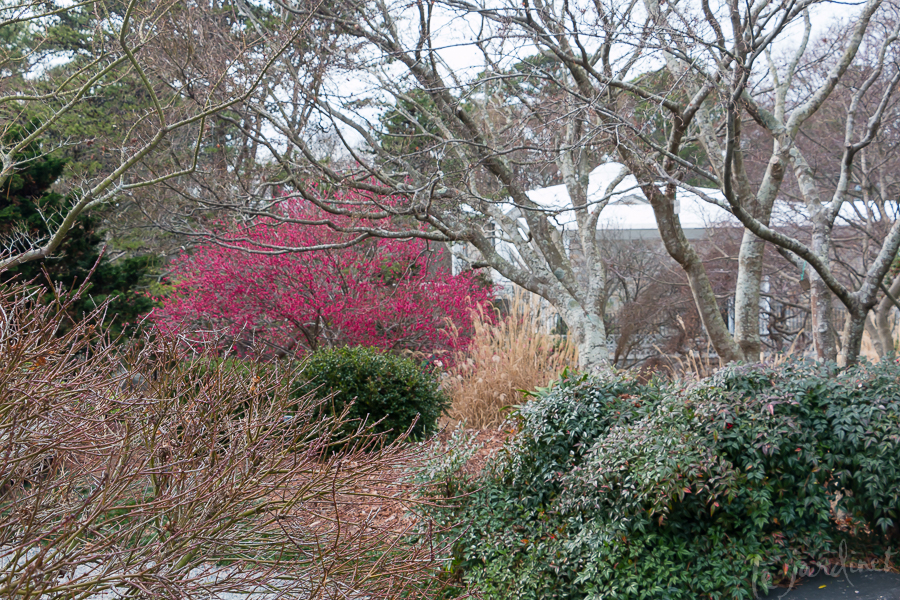
Japanese apricot (Prunus mume 'Matsubara') was probably the most photographed tree in the garden last week!
Screaming hot-pink flowers drew visitors out to the Japanese Garden – in January!! Yet the Japanese apricot (Prunus mume 'Matsubara') was absolutely dazzling – all the more so because it was the only such color in the garden. (This is also said to be fragrant, but truthfully I didn't detect a scent).
And that was the design lesson here. Allow the specimen tree to sing at the top of her beautiful voice. No competitors. Merely supporting actors such as the bleached forms of ornamental grasses or the low mounding hummocks of evergreens. Perhaps framed by the bare branches of a sculptural tree.
Because why detract from such beauty?
Include Fragrance
Witch hazels are deciduous shrubs but they often hang on to their leaves which can hide emerging blooms. Unless of course you're following your nose…..which is how I found this beauty. It wasn't labelled but it is certainly very similar to Jelena.
It was an understory shrub to a huge wintersweet (Chimonanthus praecox), also fragrant, which in turn was adjacent to a bench. Perfection.
I also loved the way paperbush (Edgeworthia chrysantha) was on either side of the above pathway. Although the yellow buds were barely opening, the intoxicating fragrance was unmistakable. Consider repeating this idea with daphne or other winter fragrant shrubs
Unapologetic Color!
Forget pastels, we need COLOR in winter, and this Crimson and Gold flowering quince delivered in spades. I should have brought sunglasses!
These thorny shrubs are deer-resistant too. What bold colors do you see in your garden right now?
Berries and Bark
I saw a beautiful allee of crapemyrtles (Lagerstroemia) but didn't have my camera that day. I did capture this scene by the canal where the vivid red berries of heavenly bamboo (Nandina domestica) played off the smooth colorful bark of crapemyrtles though. Notice how the berried shrubs are adjacent to the bark – they don't obscure it. Can you see the beautiful bark on your trees?
A little farther on I came across several clumps of winterberry (Ilex verticillata 'Winter Red') too.
Love the way it draws your eye – and feet to the bench. Can you enhance your seating areas for winter?
Foliage First!
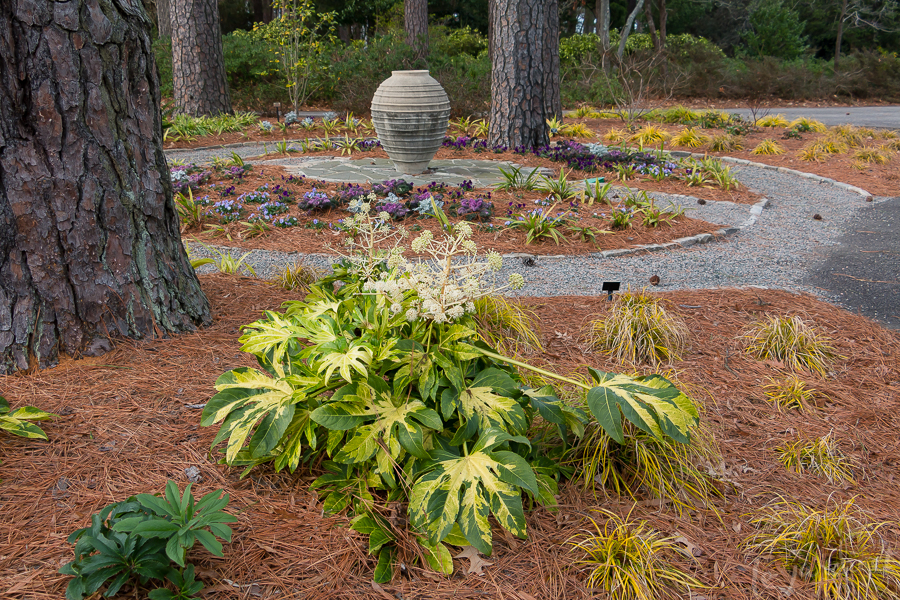
A variegated Japanese aralia (Fatsia japonica 'Murakumo Nishiki') takes center stage, accented by Carex 'Everillo'
And of course, foliage always reigns supreme and the variegated Japanese aralia above certainly drew my eye, especially as it was in bloom. Loved the way the golden grasses played off the bold variegation, both plants being evergreen and thriving in partial shade.
I couldn't find the tag for this purple leaf used both in-ground and in the container design, but I'm pretty sure it is purple mustard, possibly Osaka Purple mustard, an heirloom variety. I love the way it echoes the dark blotch on the viola. Basic container design tip right there! The addition of cut twig dogwood stems finishes it off nicely. Have you got any winter prunings you can use in this way?
Perhaps you have a structure in your garden – a summer house, pergola, gazebo, arbor or gateway? Notice how the structure above gains winter interest by framing it with colorful foliage. Can you do that?
Ornamental grasses can look stunning in the winter garden and I was especially taken by this White Cloud muhly grass paired with a golden juniper on one side….
….and a semi-dwarf blue deodar cedar on the other. GREAT contrast in texture!
What grasses do you have? What can you plant next to them for contrast?
Want More Winter Combination Ideas?
Check out my book Foliage First – there's two sections for fall/winter combinations, one for shade and one for sun.
Subscribe to Receive Blog Posts
Gardening inspiration delivered right to your inbox from Le Jardinet
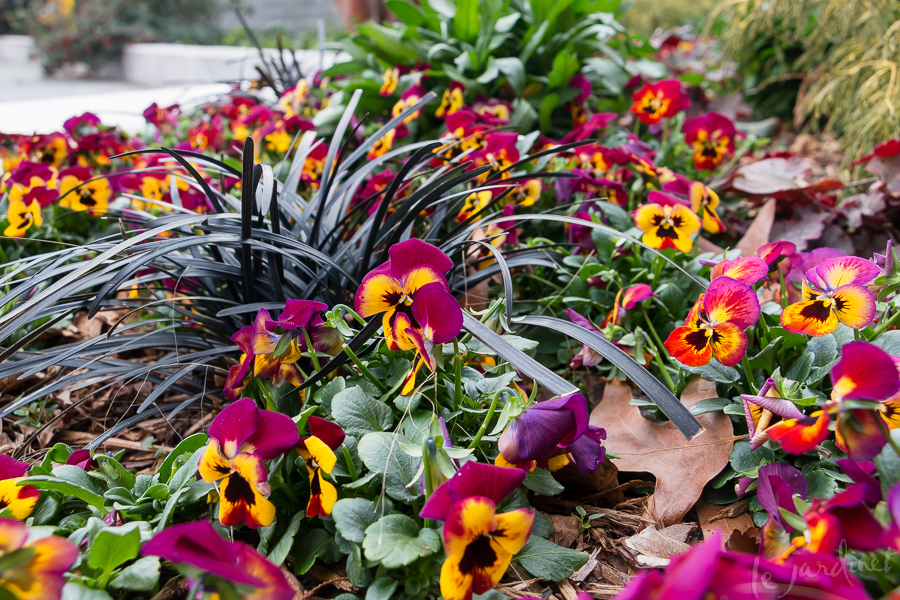
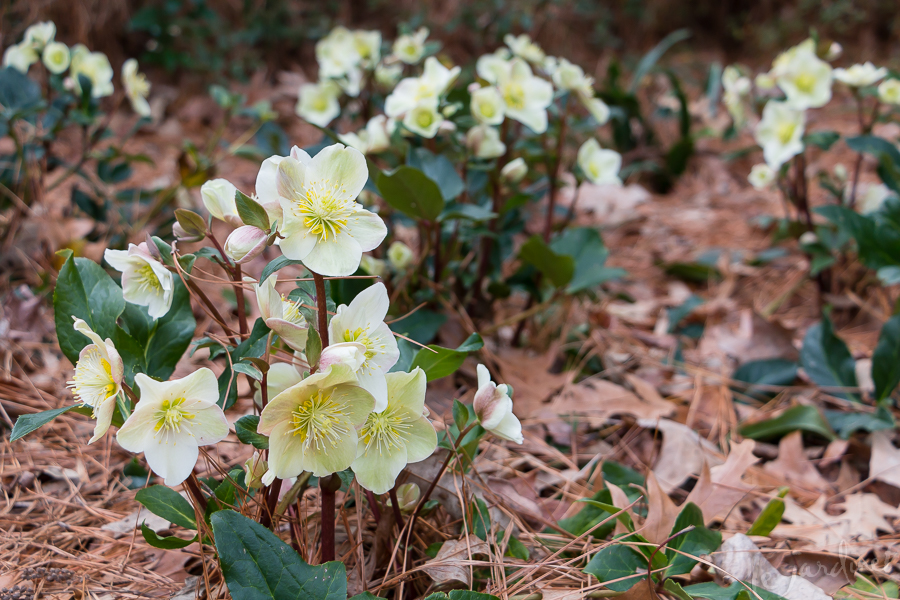
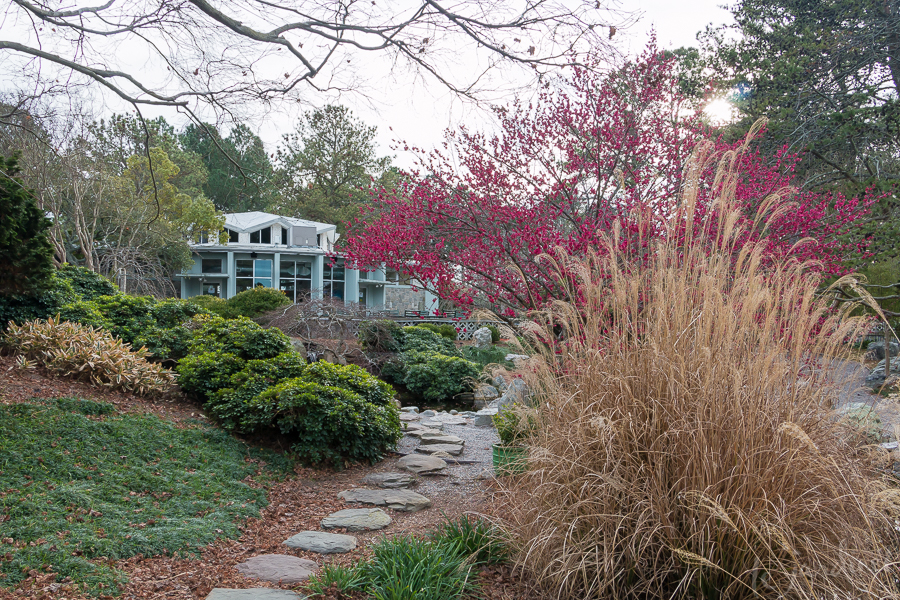
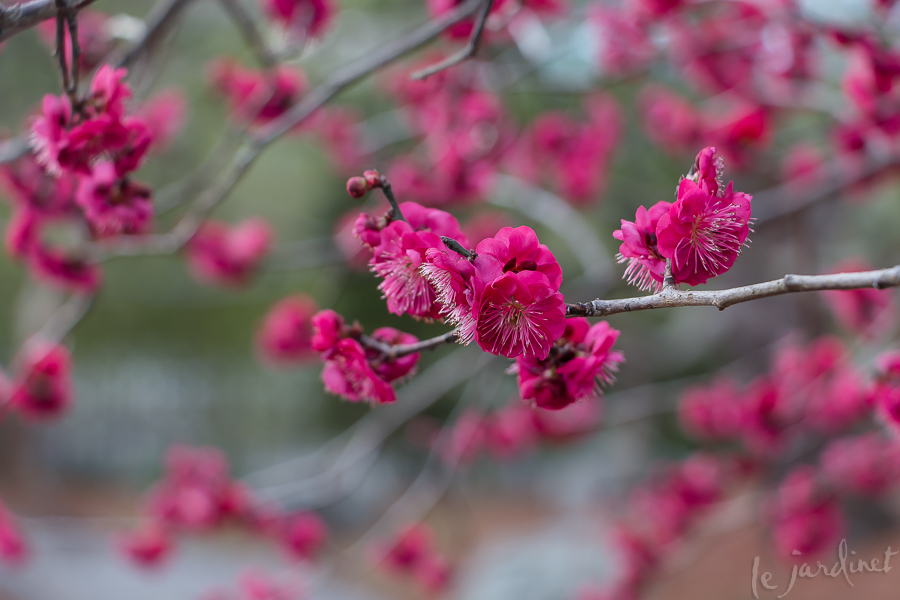
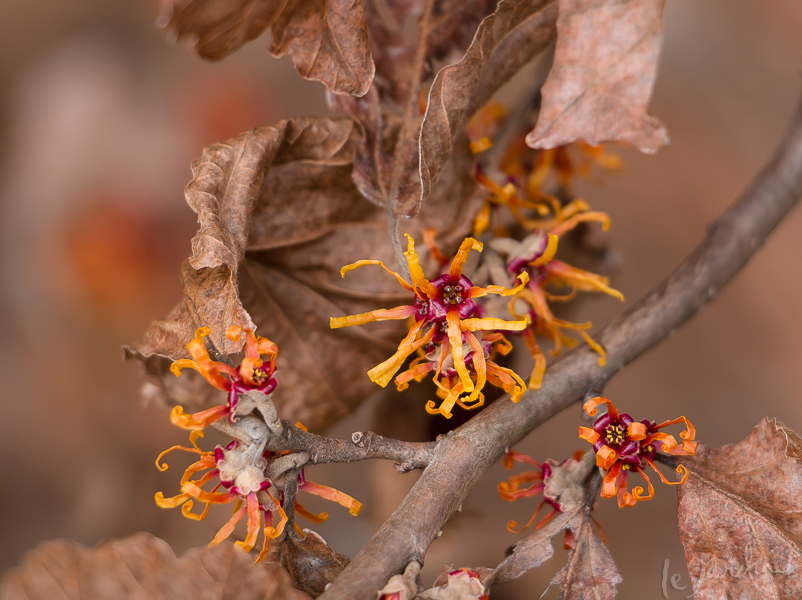
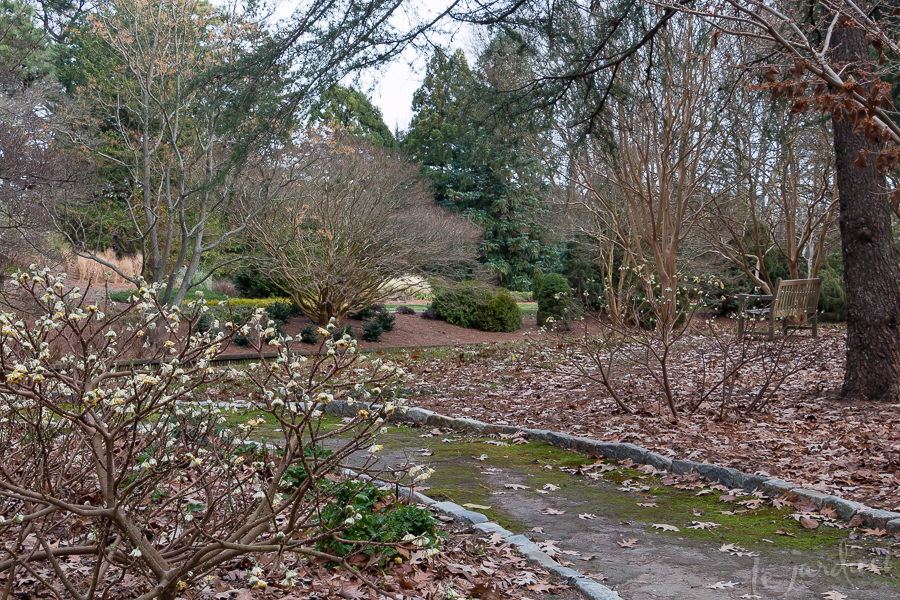
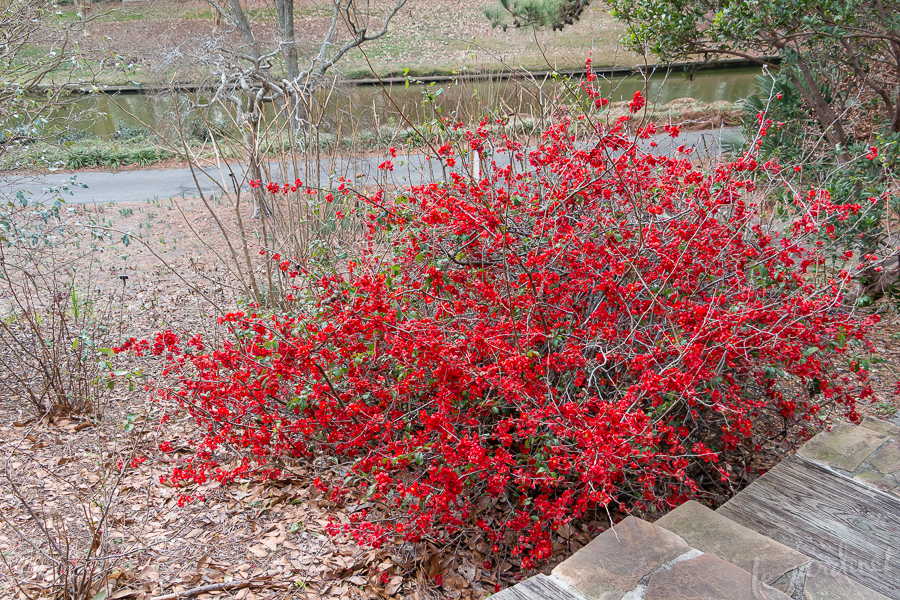
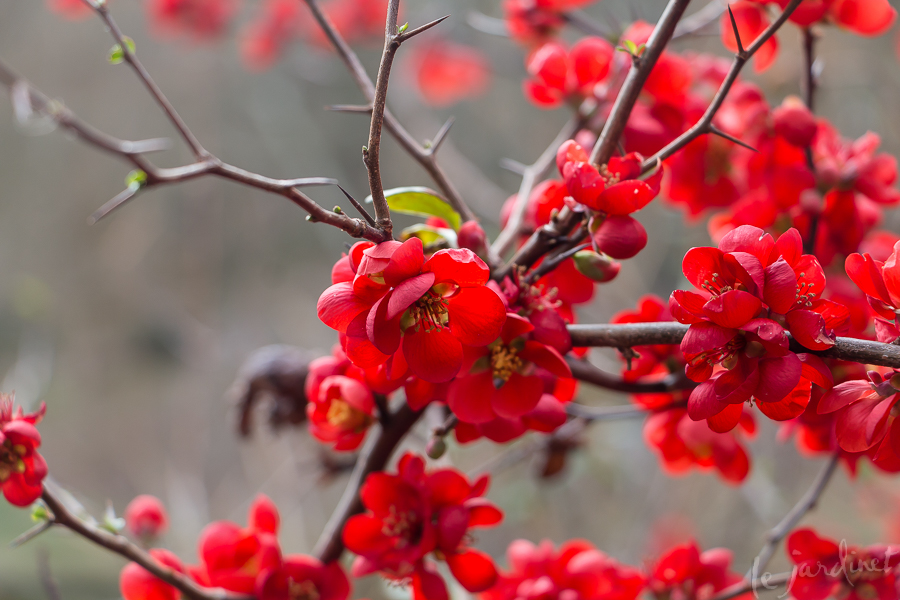
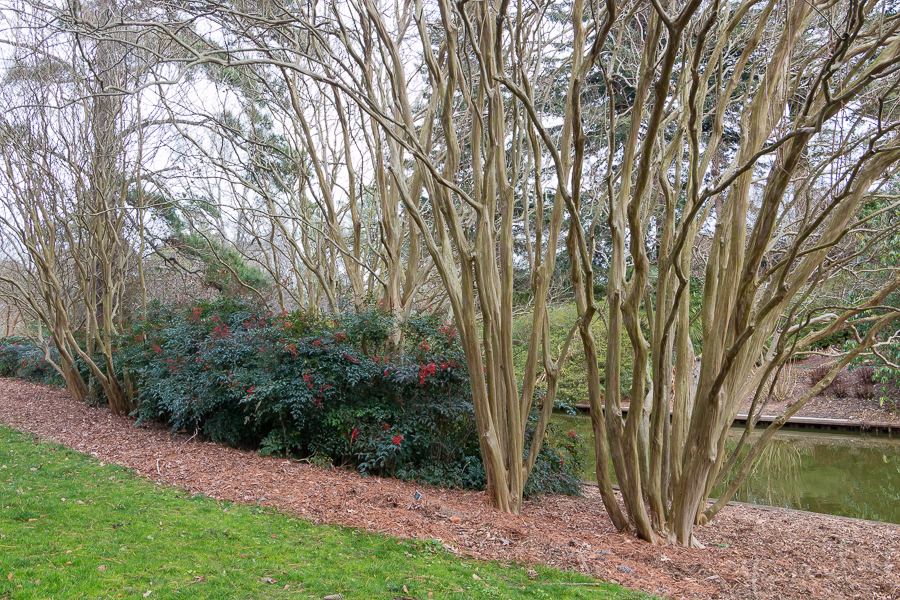

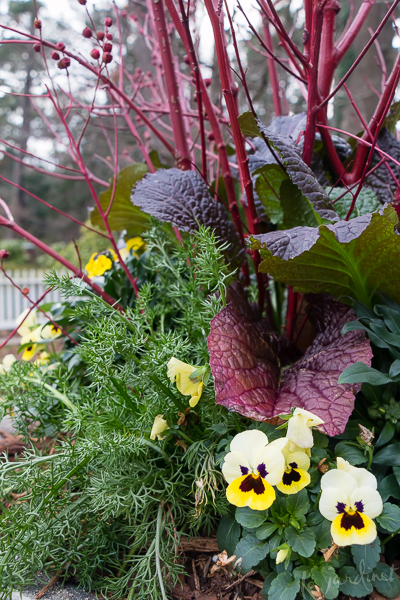
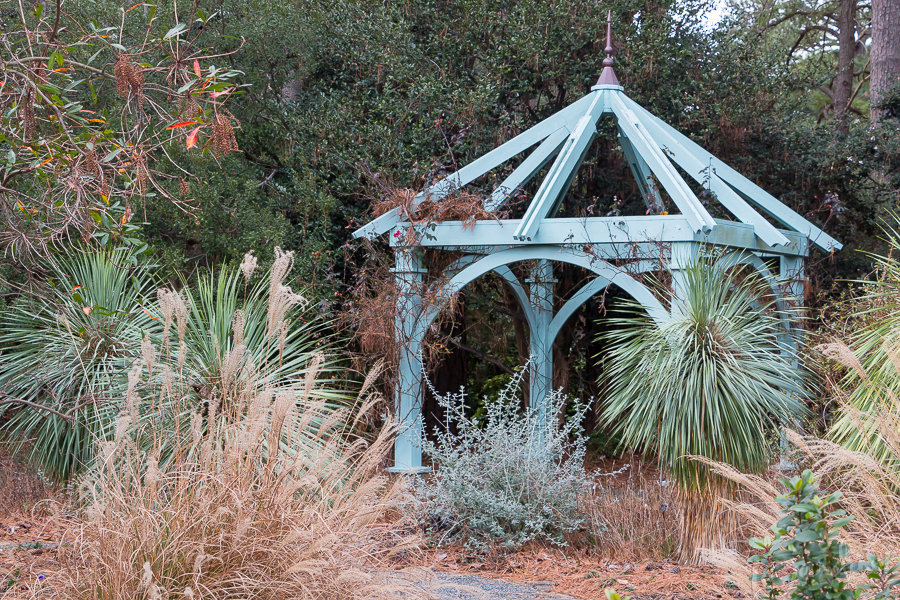
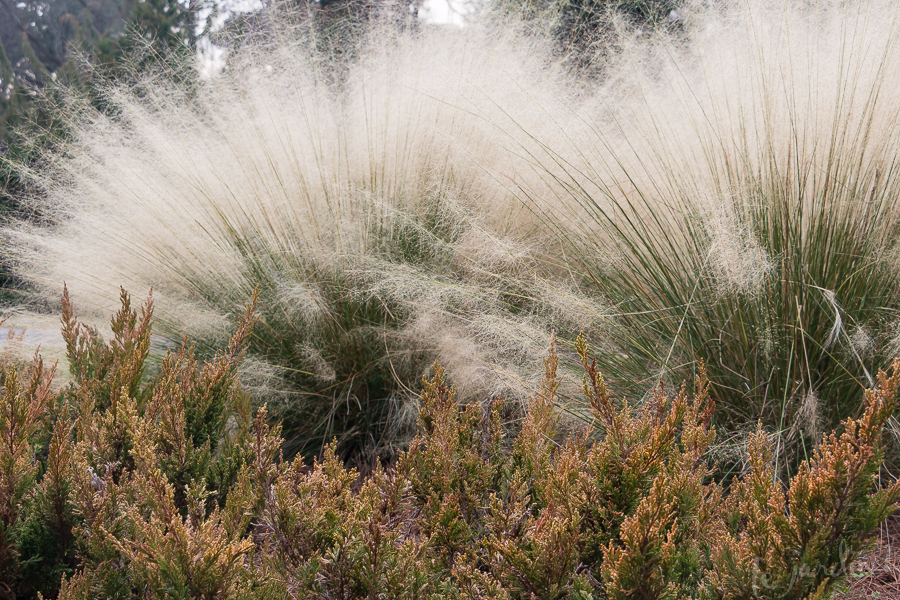
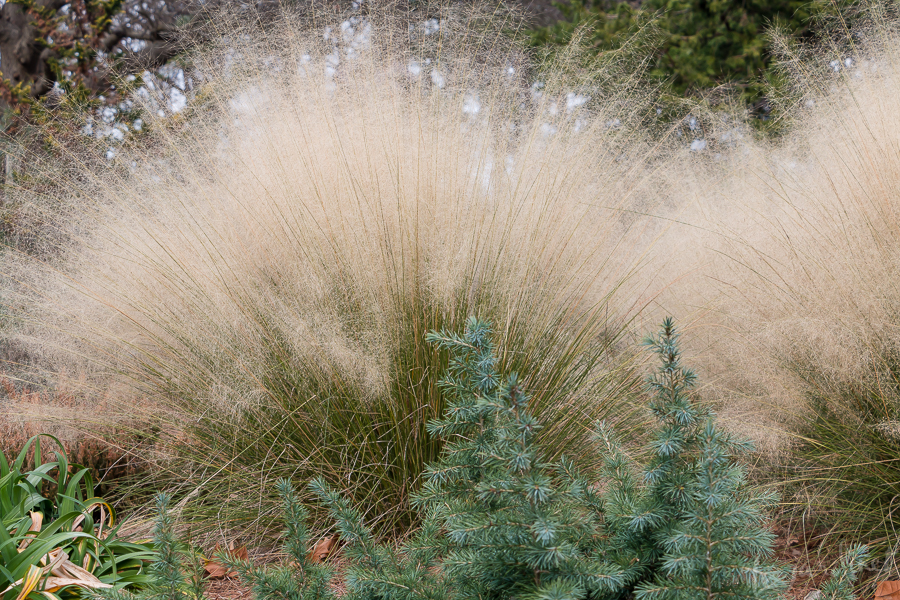
I’m a big fan of native grasses for winter interest. My favorite are the panicums and I have Northwind, Heavy Metal and two of the red varieties. Also pink muhly grass, sea oats, prairie drop seed (lining my driveway) and a few more whose names escape me. I’m also a big fan of sedges and Pennsylvania is still green in my Asheville garden in the dry shade.
It was great to get up early turn on the gas fire and to read your blog this 18 degree morning. Thanks.
You live in a wonderful area! I love all those grasses too but our wet winters turn most to mush….
I'm so envious that this is winter interest, ours right now is any evergreen that is taller than the snow. I fear I may give my left arm for blooms like that in January!
I was envious too! Everything was two months ahead of Seattle bloom time – but such a wonderful promise of what will eventually come.
You have a great eye for design. I gained great inspiration reading your article.
Thank you so much! The camera always helps me narrow my focus and analyze design – I'm glad you enjoyed the post
Karen, thanks for the lovely photos and your ideas about the scenes! It's always fun to visit great gardens, even by proxy. Would you recommend the Japanese apricot for the Olympic Peninsula (zone 8), although the nursery attached to the link in your article says it's zone 7? And do the deer like it?
Here is a link that refers to it growing in Seattle; https://www.arthurleej.com/p-o-m-Mar05.html so you can make your own judgement. As far as deer-resistance goes, the genus Prunus varies from "seldom frequently damaged (flowering cherry) to "frequently severely damaged" (edible cherries and plums)…..What can I say ?!!